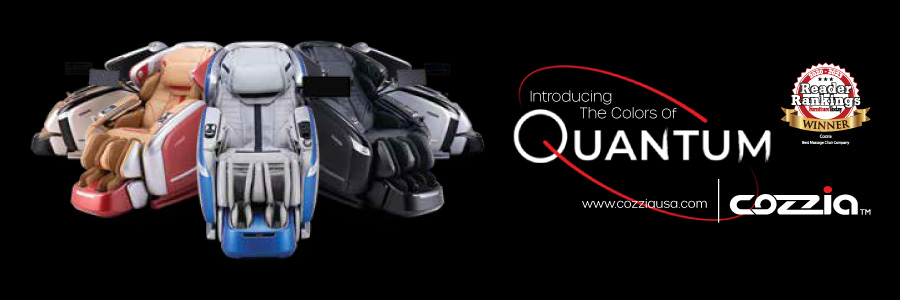During the recent furniture market, I heard lots of chatter about how the pandemic leveled the playing field — specifically between retailers and suppliers.
The thinking was that, before the pandemic, retailers ruled the roost, but when the pandemic twisted the supply chain to the point of being almost useless, retailers lost the upper hand because, for a time, nobody seemed to be able to get their hands on furniture.
I found myself wondering if, in focusing on this perceived tug of war, were both sides potentially missing a bigger challenge in the form of growing competition from direct-to-consumer sellers?
By now, we are all familiar with firms like Warby Parker, which sells eyewear direct to consumers; Bonobos, which sells DTC menswear; and Harry’s and Dollar Shave Club, providers of razor blades and shaving needs DTC.
And I am fairly certain that mattress makers who sell through traditional retail channels got a wake-up call from DTC mattress firms including Casper, Nectar, Purple, Tuft & Needle, Leesa and others, but are we paying attention to the steadily growing number of upholstery and case goods makers finding gold in the DTC model?
According to a company called BigCommerce, which describes itself as a leading open SaaS solution, “spurred by the pandemic, DTC sales were expected to surpass $150 billion in 2022, an increase of 16.9% year over year.”
On its website, BigCommerce observes that, “Pure DTC companies that completely remove wholesalers are carving out niches and reaching maturity. Subscription service models and e-commerce sites are often preferred over retail models and brick-and-mortar stores,” the company says, adding, that the DTC “sales model that encourages brand loyalty, retention of the target audience, is growing and here to stay.”
With that in mind, it’s not surprising to see DTC furniture companies including Apt 2B, Castlery, Sabai, Kardiel, Maiden Home, Albany Park and others finding favor with consumers.
According to Contentserve, a company that says it creates an all-in-one cloud solution that enables companies to deliver a frictionless, channel-less and highly personalized buying experience, DTC platforms give sellers numerous advantages over traditional selling platforms.
On its website it lists some of the advantages this way:
Increased control over brand messaging and consumer engagement
The traditional manufacturer-retailer relationship leaves little room for manufacturers to control their brand. While they do have control over packaging and other marketing activities, once the product is handed over to retailers, manufacturers can no longer influence the sale, build a relationship with consumers or gather data. Manufacturers may spend a lot on advertising, but it’s ultimately the retailers that present the product to the consumer.
More opportunities to innovate
Most retailers follow a set standard when selling. They often shy away from selling products that are new and have no track record of being a “hot-selling” item. Manufacturers are then restricted to producing what retailers want. D2C allows manufacturers to launch new products at a smaller scale, test with selected demographics and gather feedback. This way, manufacturers can understand what their customers want, produce what sells, and improve where applicable.
Direct access to customers and their data
Direct contact with customers through each stage of the buying process — including post sales — allows the collection of their email addresses, location, social media profiles, purchasing preferences, etc. Learning consumer buying behaviors helps manufacturers optimize existing products and, possibly, even create new product lines.
Gain higher margins
Manufacturers achieve higher margins by eliminating the middlemen from the picture. A middleman selling their products means they only make profit on the markup from cost to gross sale. D2C allows brands to sell products at the same price as retailers, positively impacting their bottom line.
Stronger brand loyalty
Manufacturers have more autonomy in terms of providing their customers with better service and support with D2C. They can exploit their connection with consumers to establish strong relationships and drive retention through targeted marketing campaigns.
Expanded market opportunities
Manufacturers are no longer restricted by geography when selling D2C. They can go global by just selling to the right customer segments, in the right market.
Adopting a D2C strategy is beneficial from a financial and operational standpoint. However, it is always a good idea to create forward-looking plans to ensure that the model remains consistent in delivering what the consumers demand. Therefore, it is important to continuously disrupt the strategy to always cater to the unpredictable needs of consumers and effectively scale well into the future.
So, will DTC hasten the demise of traditional retailing? In a word, no.
Like any business model, DTC has advantages and challenges.
For example, while DTC selling gives the seller more control over the product, the channel’s relatively low entry barriers mean more brands are going this route, and by extension, creating more competition.
While DTC may offer the seller higher profit margins, everything is on the shoulders, including fulfillment, of that DTC seller.
At the end of the day, two things are clear: There is no silver bullet and there is no one perfect selling platform.
The best way to stay in the game is to hit the target in front of you.



 by
by 











